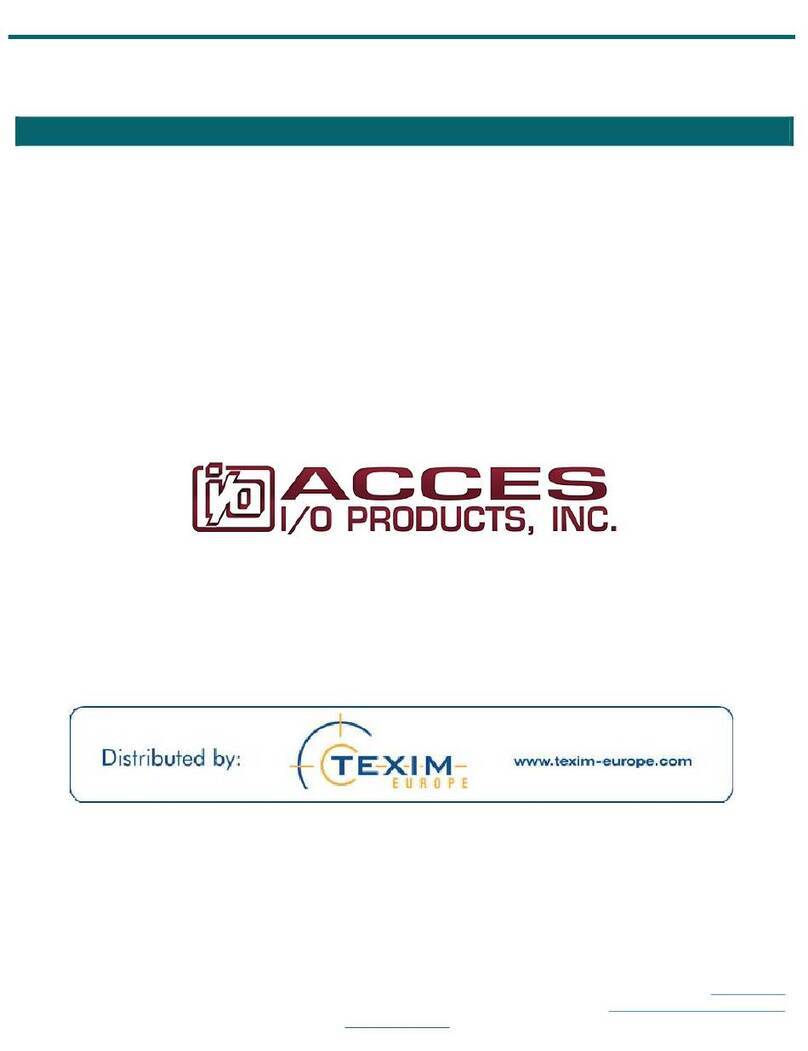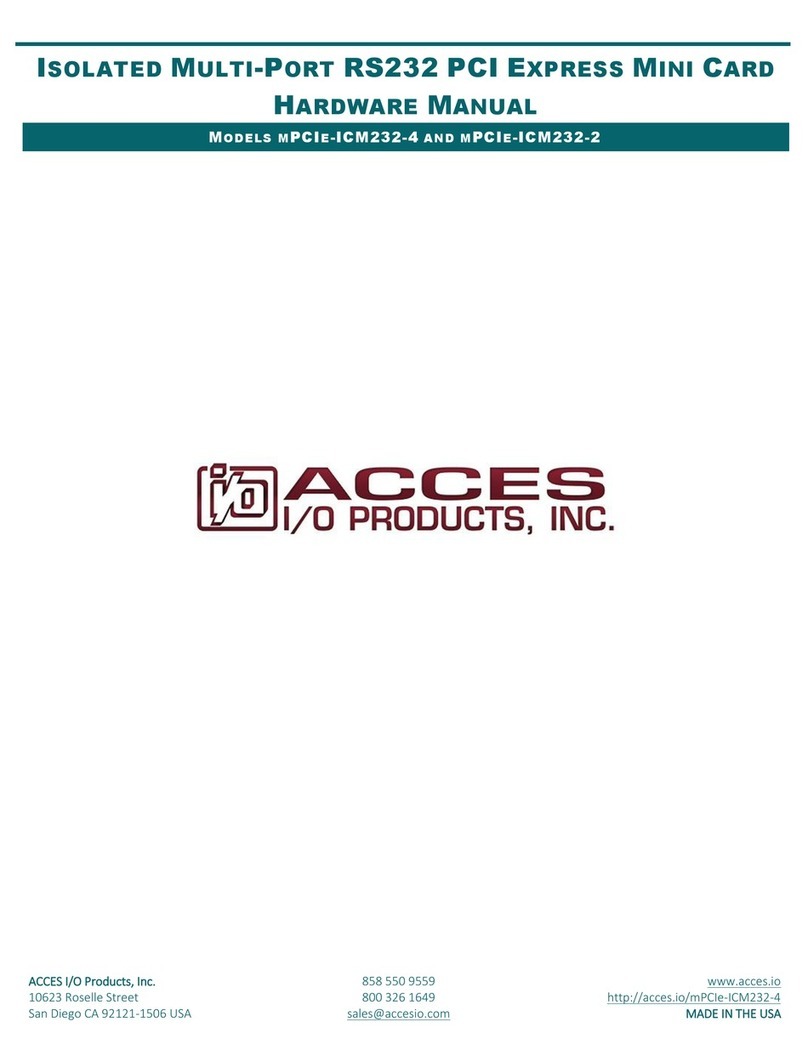ACCES I/O Products, Inc. MADE IN THE USA mPCIe-ADIO16-16F Family Manual
3 Rev B1f
CHAPTER 5: PC INTERFACE
This product interfaces with a PC using a PCI Express Mini Card
(mPCIe) connection; a small-form-factor, high-performance, rugged
peripheral interconnect technology first introduced for use in
laptops and other portable computers.
mPCIe’s small size and powerful performance, combined with
perfect software compatibility with PCI and PCIe peripheral designs,
have led to its recent adoption as a go-to standard for embedded
Data Acquisition and Control, and many other applications.
Although mPCIe is a broadly-adopted industry standard, the actual
connection to the computer shares a specification with mSATA:
both mSATA and mPCIe use the same edge-connector. In fact, well-
designed PCs can automatically detect and configure their onboard
connectors to work with either mPCIe or mSATA devices –and,
according to the standards for mPCIe and mSATA they are supposed
to do so! However, some PC manufacturers ship computers that
only support mSATA devices. Please confirm in your PC
documentation that your edge-connector is actually PCI Express
Mini Card compliant before installing this, or any, mPCIe card.
Damage might occur if you install an mPCIe device into a computer
that only supports mSATA.
mPCIe defines mounting holes for securing the otherwise loose end
of the card, so it is impossible for these cards to wiggle or flap
themselves loose (which was a recurring problem with the older PCI
Mini devices). Eliminating this concern for PCI Express Mini Cards is
a major reason this standard has seen rapid adoption by the Data
Acquisition and Control industry. Unfortunately, a variety of
mounting standoff lengths exist; ACCES offers stand-off kits in both
2mm and 2.5mm sizes. Some computers may provide stand-offs.
Please consult your computer manufacturer if it requires a different
size.
The mPCIe standard, like its PCI Mini Card predecessor, was
designed assuming use primarily in Laptop or Notebook and similar
devices, where physical dimension is often the paramount design
constraint. In Data Acquisition and Control applications low-weight
and vibration tolerance tend to be of more concern.
CHAPTER 6: I/O INTERFACE
Most customers will use the optional cable assembly CAB-mPCIe-
ADIOs D-Sub Miniature 37-pin Male connector.
For Singled-Ended analog inputs connect GND to ADC COMMON.































